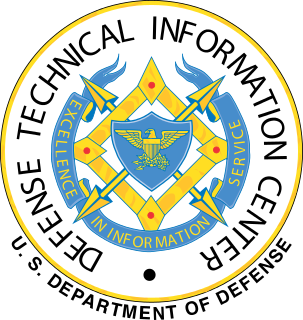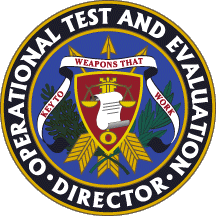
Systems engineering is an interdisciplinary field of engineering and engineering management that focuses on how to design and manage complex systems over their Life cycles. At its core, systems engineering utilizes systems thinking principles to organize this body of knowledge. The individual outcome of such efforts, an engineered system, can be defined as a combination of components that work in synergy to collectively perform a useful function.
A simulation is an approximate imitation of the operation of a process or system; the act of simulating first requires a model is developed. This model is a well-defined description of the simulated subject, and represents its key characteristics, such as its behaviour, functions and abstract or physical properties. The model represents the system itself, whereas the simulation represents its operation over time.
Social simulation is a research field that applies computational methods to study issues in the social sciences. The issues explored include problems in computational law, psychology, organizational behavior, sociology, political science, economics, anthropology, geography, engineering, archaeology and linguistics.

The Institute for Defense Analyses (IDA) is an American non-profit corporation that administers three federally funded research and development centers (FFRDCs) – the Systems and Analyses Center (SAC), the Science and Technology Policy Institute (STPI), and the Center for Communications and Computing (C&C) – to assist the United States government in addressing national security issues, particularly those requiring scientific and technical expertise. It is headquartered in Alexandria, Virginia.

Naval Surface Warfare Center Crane Division is the principal tenant command located at Naval Support Activity Crane. NSA Crane is a United States Navy installation located approximately 35 miles southwest of Bloomington, Indiana and predominantly located in Martin County, but small parts also extend into Greene and Lawrence counties. It was originally established in 1941 under the Bureau of Ordnance as the Naval Ammunition Depot for production, testing, and storage of ordnance under the first supplemental Defense Appropriation Act. The base is named after William M. Crane. The base is the third largest naval installation in the world by geographic area and employs approximately 3,300 people. The closest community is the small town of Crane, which lies adjacent to the northwest corner of the facility.

Located at Kirtland Air Force Base, New Mexico, the Air Force Operational Test and Evaluation Center is a direct reporting unit of Headquarters, United States Air Force. It is the Air Force independent test agency responsible for testing, under operationally realistic conditions, new systems being developed for Air Force and multi-service use.

The Defense Technical Information Center is the repository for research and engineering information for the United States Department of Defense (DoD). DTIC's services are available to DoD personnel, federal government personnel, federal contractors and selected academic institutions. The general public can access unclassified, unlimited information through its public web site, DTIC Online.

Base isolation, also known as seismic base isolation or base isolation system, is one of the most popular means of protecting a structure against earthquake forces. It is a collection of structural elements which should substantially decouple a superstructure from its substructure resting on a shaking ground thus protecting a building or non-building structure's integrity.

The Operational Test and Evaluation Force (OPTEVFOR) serves as independent and objective agency within the United States Navy for the operational testing and evaluation (OT&E) of naval aviation, surface warfare, submarine warfare, C4I, cryptologic, and space systems in support Navy and U.S. Department of Defense acquisition programs.

The Director, Operational Test and Evaluation (DOT&E) is the principal staff assistant and adviser to the US Secretary of Defense on operational and live fire test and evaluation (OT&E) activities involving U.S. Department of Defense (DOD) weapons systems.

Focal Plane Array testing is a specialized field of test engineering. Focal plane array (FPA) imaging devices are used in missile guidance sensors, infrared astronomy, manufacturing inspection, and thermal imaging. Focal plane array testing is the process of verifying and validating that these devices function correctly. Focal plane arrays are complex to develop, in some cases the fabrication process may have more than 150 steps, testing of these devices must ensure that each step has the desired result.
The DoD Modeling and Simulation Glossary, was originally created in 1998. Currently the glossary is in the process of being updated to include up to date information. The update to the glossary does not change the main objective to provide a uniform language for use by the M&S community. It now simply consists of a relevant, up to date, accurate set of terms. This article contains a list of terms and acronyms, based on the original DoD 5000.59-M but also provides information related to its current update.
Model–test–model (MTM) is a process that intends to use high-fidelity/high-resolution combat models to simulate and replicate field operational tests. The MTM Process is divided into 5 phases:
Live, Virtual, and Constructive (LVC) Simulation is a broadly used taxonomy for classifying Models and Simulation (M&S). However, categorizing a simulation as a live, virtual, or constructive environment is problematic since there is no clear division between these categories. The degree of human participation in a simulation is infinitely variable, as is the degree of equipment realism. The categorization of simulations also lacks a category for simulated people working real equipment.

The Weapon Systems Acquisition Reform Act, formally known as the Weapons Acquisition System Reform Through Enhancing Technical Knowledge and Oversight Act of 2009, was an Act of Congress created to reform the way the Pentagon contracts and purchases major weapons systems. It was signed into law on May 22, 2009 by President Barack Obama.

Systems modeling or system modeling is the interdisciplinary study of the use of models to conceptualize and construct systems in business and IT development.

The United States Army Simulation and Training Technology Center (STTC) provide the United States Department of Defense and United States Department of Homeland Security with state-of-the-art applied research to develop simulation technologies, build on current simulation knowledge, and understand system of systems environments where human, agent, and teams are involved.

Stephen Edward Cross is executive vice president for research (EVPR) at the Georgia Institute of Technology (Georgia Tech), a position to which he was appointed in 2010. As EVPR, Cross coordinates research efforts among Georgia Tech's colleges, research units and faculty; and provides central administration for all research, economic development and related support units at Georgia Tech. This includes direct oversight of Georgia Tech's interdisciplinary research institutes, the Georgia Tech Research Institute (GTRI), the Enterprise Innovation Institute (EI2) and the Georgia Tech Research Corporation (GTRC).

Interactive Scenario Builder (Builder) is a modeling and simulation, three-dimensional application developed by the Advanced Tactical Environmental Simulation Team (ATEST) at the Naval Research Laboratory (NRL) that aids in understanding the radio frequency (RF) environment.
A battle lab or battle laboratory is a capability enabled by a set of means to analyze or assess impacts that could be induced by changes in a military realm. The changes can be of any kind: equipment, technologies, organization, doctrine or changes in the environment itself.














